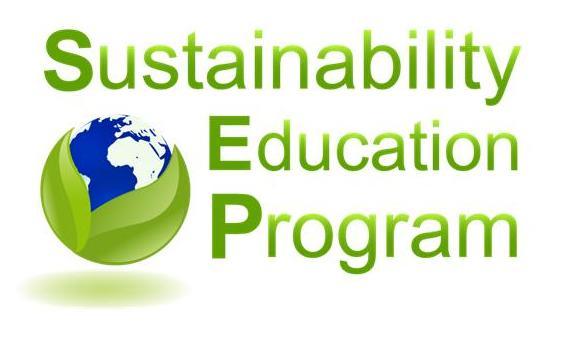By Colin I. Bradford
“The Earth in the coming decades could cease to be a ‘safe operating space’ for human beings,” concludes a paper by 18 researchers “trying to gauge the breaking points in the natural world,” published in Science in January 2015. That our planetary environment seems to be approaching “breaking points” is but one of several systemic threats looming on the horizon or lurking under the surface.
Since the economic crisis in 2008, the world has learned that financial instability is a global threat to sustainable livelihoods and economic progress. The underlying dynamics of technological change seem to be more labor displacing than labor absorbing, creating increasing anxiety that employment and career trajectories are permanently threatened. These two challenges undermine public confidence in the market economy, in institutions, and in political leaders. They constitute systemic threats to the credibility of markets and democracy to generate socially and politically sustainable outcomes for societies.
The fact that one billion people still live in extreme poverty, that there are scores of countries that are considered to be “failed states,” and that genocide, virulent violence, and terrorism are fed by this human condition of extreme deprivation together constitute a social systemic threat, global in scope. These challenges together merge with a growing public awareness of global inequality between nations and of increasing inequality within nations. The power of money in public life, whether in the form of overt corruption or covert influence, disenfranchises ordinary people and feeds anger and distrust of the current economic system.
These systemic threats constitute challenges to planetary, financial, economic, social, and political sustainability. These are not just specific problems that need to be addressed but pose severe challenges to the viability and validity of current trends and practices and contemporary institutional arrangements and systems.
Systemic sustainability is the strategic imperative for the future
These challenges are global in reach, systemic in scale, and urgent. They require deliberate decisions to abandon “business-as-usual” approaches, to rethink current practices and engage in actions to transform the underlying fundamentals in order to avoid the collapse and catastrophe of systems that average people depend upon for normal life.
Systemic risks are real. Generating new pathways to systemic sustainability are the new imperatives. Holistic approaches are essential, since the economic, social, environmental, and political elements of systemic risk are interrelated. “Sustainable development,” once the label for environmentally sensitive development paths for developing countries, is now the new imperative for systemic sustainability for the global community as a whole.
Implications for global goal-setting and global governance
Get Africa policy updates from Brookings
Enter Email
2015 is a pivotal year for global transformation. Three major work streams among all nations are going forward this year under the auspices of the United Nations to develop goals, financing, and frameworks for the “post-2015 Sustainable Development Agenda.” First, in New York in September—after two years of wide-ranging consultation—the U.N. General Assembly will endorse a new set of global development goals to be achieved by 2030, to build upon and replace the Millennium Development Goals (MDGs) that culminate this year. Second, to support this effort, a Financing for Development (FFD) conference took place in July in Addis Ababa, Ethiopia, to identify innovative ways to mobilize private and public resources for the massive investments necessary to achieve the new goals. And third, in Paris in December, the final negotiating session will complete work on a global climate change framework.
These three landmark summits will, with luck, provide the broad strategic vision, the specific goals, and the financing for addressing the full range of systemic threats. Most of all, these events, along with the G-20 summit of leaders of the major economies in November in Antalya, Turkey, will mobilize the relevant stakeholders and actors crucial for implementing the post-2015 agenda—governments, international organizations, business, finance, civil society, and parliaments—into a concerted effort to achieve transformational outcomes. Achieving systemic sustainability is a comprehensive, inclusive effort requiring all actors and all countries to be engaged.
Four major elements need to be in place for this process to become a real instrument for achieving systemic sustainability across the board.
First, because everyone everywhere faces systemic threats, the response needs to be universal. The post-2015 agenda must be seen as involving advanced industrial countries, emerging market economies, and developing nations. Systemic sustainability is not a development agenda limited to developing countries, nor just a project to eradicate poverty, nor just an agenda for development cooperation and foreign aid. It is a high policy agenda for all countries that goes to the core of economics, governance, and society, addressing fundamental dynamics in finance, energy, employment, equity, growth, governance, and institutions.
Second, systemic threats are generated because of spillover effects from activities that used to be considered self-contained and circumscribed in their impact. The world of silos and vertical self-sufficiency has given way to an integrated world in which horizontal linkages are as important as vertical specialization. The result of these interlinkages is that synergies can be realized by taking comprehensive integrated approaches to major issues. In this new context, positive-sum benefits are potentially more easily realized, but integrated strategies are necessary for doing so.
This new context of spillovers and synergies has two implications. The domestic dimension is that whole-of-government approaches are necessary for addressing systemic sustainability. Cross-sectoral, inter-ministerial approaches are essential. Since markets alone are not able to realize optimal outcomes in the widespread presence of externalities, the only way to realize the positive sum potential of synergies is through coordination among related actors. On the international dimension, this new context also requires more cooperation and coordination than competition to realize synergistic, positive-sum outcomes.
Third, domestic political pressures are primary. This may be a variant of the old saying that “all politics is local.” However, the aftermath of the 2008 global financial crisis has been a world of hurt in which impacted publics are feeling anger and alienation from an economic system that has threatened their jobs, incomes, pensions, homes, and livelihoods. The task of leaders is not to pander to these plights but to lead their people to understand the vital linkage between domestic conditions and external forces and the degree to which the global context inevitably impacts on domestic conditions. Leaders need to be able to explain to their people that systemic threats have inextricable global–domestic linkages that need to be managed, not ignored.
Fourth, given all this, it is absolutely necessary that the global system of international institutions be “on the same page,” share the same vision, strategy, and goals, rather than each taking its primary mandate as a writ for independence from the common agenda.
The major challenges for global governance in this pivotal turn from goal-setting in 2015 to the beginning of implementation in 2016 are to ensure (i) that all countries adapt and adopt the post-2015 agenda in ways that are congruent with their national culture and context while at the same time committing to reporting on all aspects of the agenda; (ii) that whole-of-government institutional mechanisms and processes are put in place domestically to realize the synergies that can accrue only from comprehensive, integrated approaches and that international cooperation mechanisms gain greater traction to reap the positive-sum outcomes from global consultation, coordination, and cooperation; (iii) that national political leaders learn new modes of domestic and international leadership that are capable of articulating the new context and new systemic risks that need to be managed both internally and globally; and (iv) that each international institution realizes the need to be part of a system-wide global effort to achieve systemic sustainability through concerted efforts of all relevant actors working together on behalf of a common global agenda.






